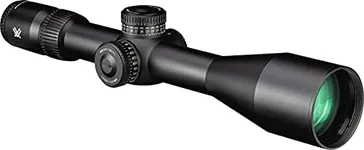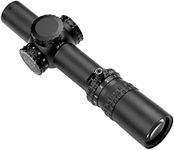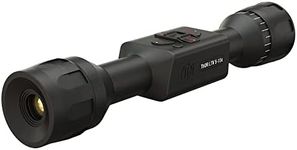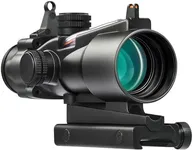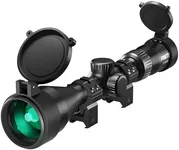Buying Guide for the Best Hunting Scopes
Choosing the right hunting scope can significantly enhance your hunting experience by improving your accuracy and range. When selecting a hunting scope, it's important to consider various specifications that will affect your performance in the field. Understanding these key specs will help you make an informed decision based on your specific needs and hunting conditions.MagnificationMagnification refers to how much closer the target appears compared to the naked eye. This is important because it determines how well you can see your target at different distances. Scopes typically have fixed or variable magnification. Fixed magnification scopes are simpler and more durable, while variable magnification scopes offer flexibility for different ranges. For close-range hunting, a lower magnification (1-4x) is sufficient. For medium-range, consider 5-9x, and for long-range, 10x or higher may be necessary. Choose based on the typical distance you expect to shoot.
Objective Lens DiameterThe objective lens diameter is the size of the front lens of the scope, measured in millimeters. This spec is important because it affects the amount of light that enters the scope, impacting image brightness and clarity. Larger diameters (40mm and above) allow more light, which is beneficial in low-light conditions like dawn or dusk. However, larger lenses can be heavier and bulkier. If you hunt in low-light conditions, opt for a larger diameter. For general daylight hunting, a smaller diameter (32-40mm) may suffice.
ReticleThe reticle, or crosshair, is the aiming point you see when looking through the scope. Different reticle designs can aid in various shooting scenarios. Simple crosshairs are good for general use, while more complex reticles with hash marks or dots can help with range estimation and bullet drop compensation. Choose a reticle that matches your hunting style. For example, if you often shoot at varying distances, a reticle with range-finding capabilities might be beneficial.
Eye ReliefEye relief is the distance between your eye and the scope where you can see the full image. This is crucial for comfort and safety, especially with high-recoil rifles. Longer eye relief (3-4 inches) is better for high-recoil firearms to prevent injury from the scope hitting your face. For lower recoil rifles, shorter eye relief may be acceptable. Consider your firearm's recoil and your comfort when choosing eye relief.
Field of ViewField of view (FOV) is the width of the area you can see through the scope at a specific distance, usually measured in feet at 100 yards. A wider FOV allows you to see more of the surroundings, which is useful for tracking moving targets. Lower magnification scopes generally offer a wider FOV. If you hunt in dense areas or need to track fast-moving game, a wider FOV is advantageous. For long-range precision shooting, a narrower FOV may be acceptable.
Parallax AdjustmentParallax adjustment helps to ensure that the reticle remains on target even if your eye position changes slightly. This is important for accuracy, especially at longer distances. Scopes without parallax adjustment are typically set for a specific range (usually 100 yards). If you shoot at varying distances, a scope with adjustable parallax can help maintain accuracy. Consider this feature if you plan to shoot at long ranges or need precise accuracy.
Durability and Weather ResistanceDurability and weather resistance are crucial for a hunting scope, as it will be exposed to various environmental conditions. Look for scopes that are waterproof, fog-proof, and shockproof. These features ensure that the scope can withstand harsh weather and rough handling. If you hunt in diverse and challenging environments, prioritize scopes with robust construction and weather-resistant features.


